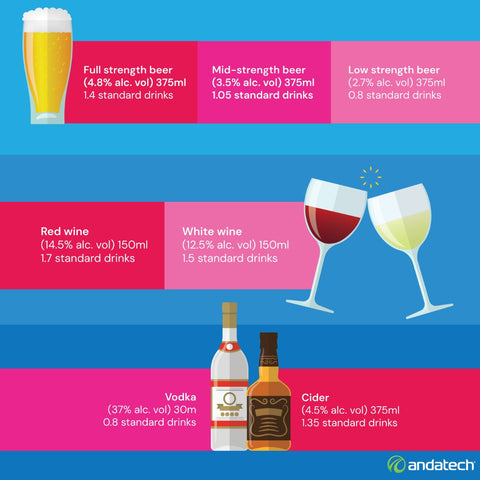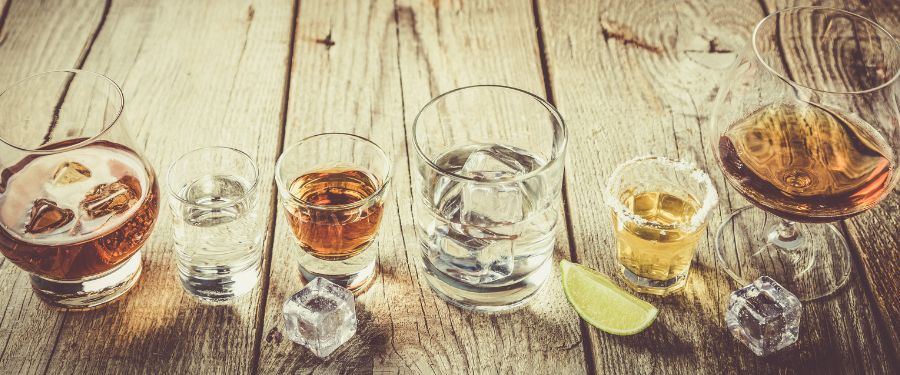For anyone who drinks, it is important to know how much alcohol is in a standard drink. This can help them stay within safe limits and avoid drinking too much. In addition to that, there are different sizes of standard drinks, depending on the country.
What most of us don’t realise is how strong an alcoholic beverage can be, especially if alcohol is diluted with water or other mixers. A mixed alcoholic beverage could contain more than 1 standard drink, and drinking more than one rapidly can make you drunk faster.
Read on to find out what a standard drink means in Australia.
What is a standard drink?
A standard drink is any beverage that contains 10g of pure alcohol. It does not matter if the drink is served with other soft drinks or juices.
However, don’t confuse a serving of alcohol for a ‘standard drink’. One serving of alcohol does not equal one standard drink – a serving of alcohol is usually bigger.
For example, a serving of glass wine is typically 150ml, but 1 standard drink corresponds to 100ml of wine. This means that if you’re having 2 glasses of wine, you might actually be consuming 3 standard drinks, not 2.
Check out the chart below to get a rough idea of the average number of standard drinks in beer, wine, and spirits.
Standard drinks in different servings of alcohol

| Light beer 2.7% alcohol (375ml) | 0.8 standard drink |
| Mid-strength beer 3.5% alcohol (375ml) | 1.05 standard drink |
| Full-strength beer 4.8% alcohol (375ml) | 1.4 standard drinks |
| White wine 12.5% alcohol (150ml) | 1.5 standard drinks |
| Red wine 14.5% alcohol (150ml) | 1.7 standard drinks |
| Vodka 37% alcohol (30ml) | 0.8 standard drinks |
| Cider 4.5% alcohol (375ml) | 1.35 standard drinks |
Finding out how many standard drinks you've consumed
Alcoholic beverages in Australia that are served in bottles, cans and casks are required by law to state on the label the approximate number of standard drinks they contain.
So if you’re having a bottled drink, be sure you check the label to find out how many standard drinks it contains.
However, note that there are many factors that affect your BAC levels. Due to this, there's no real way to calculate how many drinks it'll take to reach 0.05 other than by using a device such as a personal breathalyser.
If you don't already know what BAC is, then you should read: What is BAC?
Enjoy your time out, but we encourage you to not drink and then drive. Alcohol breathalysers are there only for assistance in determining your BAC.





